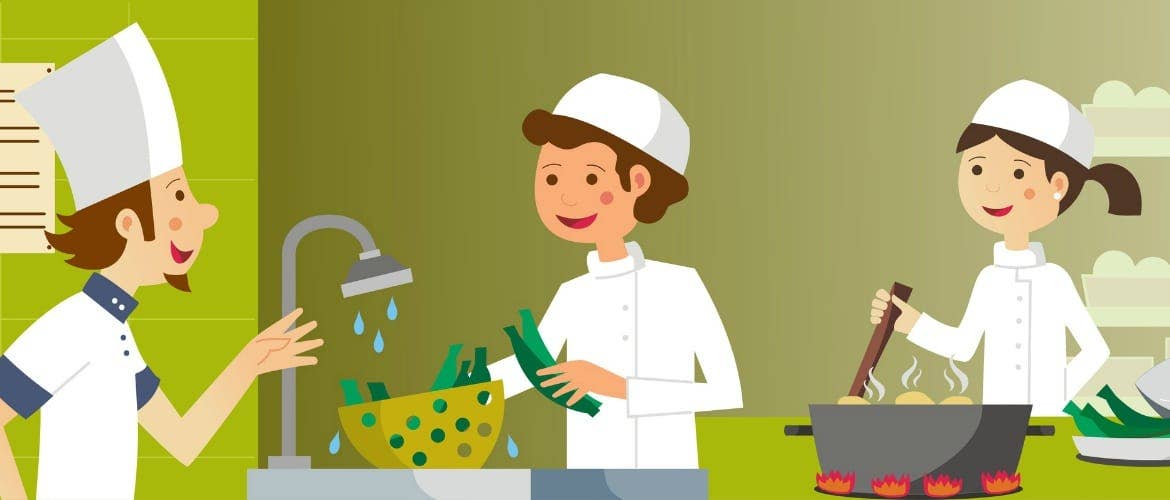

Pupils fill out 'Kitchen Pledge' to take home – either individually or as a whole class.ĭO – Can pupils find food safety hazards on the interactive kitchen scene?.Encourage ideas such as 'I can help keep the fridge cold by making sure the door is closed and temperature is below 5 degrees C', 'I can help to put food back in the fridge so that it doesn't go off', or 'I can make sure my pets don’t walk on the worktops', 'I can make sure that my chicken is cooked all the way through by checking there is no pink meat and the juices run clear'.What can they do to help stop potential food safety hazards in their kitchen?.Display the interactive scene again and ask pupils to think about their own kitchens.Keep going until all the hazards have been remembered – some prompting may be needed towards the end!.Pupils take turns to name a problem on the scene again.When the minute is up, click 'I'm done' and 'start again' to remove the answers from the whiteboard.Allow pupils to look carefully at the interactive scene with the warning signs for up to a minute, trying to remember the different problems.The number and type of hazards identified in the lesson can be tailored to the age and level of the pupils by the teacher as it is an open ended activity.The hazards are: high fridge temperature, pink chicken in the oven, milk out of the fridge, fish is on the top shelf of the fridge, sausages are not in a sealed container and are on the top shelf, peppers are not in the vegetable drawer, milk is not in the fridge, fridge door is open, cat is on worktop with dirty paws, dirty plates left on worktop, dirty tea towel and dish cloth, fruit and meat being cut on same chopping board.Ask/discuss 'What's wrong here?' for each problem the pupils identify and agree if it is a problem or not (for yes = a warning sign comes up and stays).Allow pupils to come up to the front and click on the areas on the interactive kitchen where pupils think there is a food safety issue.Put the interactive kitchen scene on the whiteboard and working together as a whole class, ask pupils, 'What is wrong in this kitchen?'.If you can't tell whether a juice has been processed to destroy harmful bacteria, either don't use the product or boil it to kill any harmful bacteria.

WARNING: This product has not been pasteurized and therefore, may contain harmful bacteria that can cause serious illness in children, the elderly, and persons with weakened immune systems.

Such juices must have this warning on the label: However, unpasteurized or raw juice may be found in the refrigerated sections of grocery stores, or at health-food stores, cider mills or farm markets. Apple cider and most juices available at grocery stores are pasteurized or otherwise treated to destroy harmful bacteria. Safe alternatives are pasteurized eggnog beverages sold in grocery dairy cases these products should be kept refrigerated.Īpple cider and other juices: Apple cider is often served during the holiday season. While cooking can destroy the disease-causing bacteria, consumers can still become ill when the eggnog is left at room temperature for several hours before being consumed. Proper and complete cooking kills bacteria that cause these infections.Įggnog: Traditional eggnog made with raw eggs is also a potential risk, again because the raw egg may contain the bacteria Salmonella. This is because raw fresh eggs may contain the bacteria Salmonella, and flour used in baking has been linked to E. Food and Drug Administration advises consumers not to eat uncooked cookie dough, whether homemade or commercial, or batters made with raw fresh eggs. Ground beef should ALWAYS be cooked to an internal temperature of 160° F.īaked goods: The U.S. Since 1986, eight outbreaks have been reported in Wisconsin linked to eating a raw ground beef dish, including a large Salmonella outbreak involving more than 150 people during December 1994. Regardless of where you buy your ground beef, these risks are real. coli O157:H7, Campylobacter and Listeria are bacteria that can be found in raw and undercooked beef. It is important to know that eating these types of foods is not without risks. Tiger Meat or Cannibal Sandwiches: For some Wisconsinites, it’s a tradition to eat raw ground beef dishes, often referred to as tiger meat, steak tartare or cannibal sandwiches. Some traditional holiday treats may have some special guidelines for safe seasonal enjoyment:


 0 kommentar(er)
0 kommentar(er)
